Aboriginal Place for Mambo-Wanda
By Kathy Brown, Mambo-Wanda Wetlands Conservation Group.

In June this year I wrote an email on behalf of the Mambo-Wanda Wetlands Conservation Group to Port Stephens Council. It was an enquiry about the Aboriginal Place claim for the Mambo Wanda Wetlands. Carol Ridgeway-Bissett, a well known Worimi traditional knowledge holder, has been waiting over 10 years for a decision on her application for Mambo-Wanda Wetlands to be declared an Aboriginal Place. This process began in 2011 and Carol has received no word of its progress in the past 2 years. Below you can read a timeline of events related to this claim.
I have been informed by Council officers that the matter now lies with the State Government’s Heritage NSW Department. This is an extract from Council’s response:
“As Heritage NSW are responsible for assessing Aboriginal Place nominations, enquiries relating to the status of nominations would be best directed to them. Please note that Heritage NSW has previously advised that the timing of such determinations is contingent on their capacity to complete the relevant assessments and reports. Council will continue to provide support as requested by Heritage NSW to facilitate the assessment of all Aboriginal Place nominations.”
What is an Aboriginal Place and what does it mean?
An Aboriginal Place is an area of land that has special significance for Aboriginal people. It can have spiritual, historical, social, educational, natural resource use or other type of significance. These places range from small ceremonial sites to mountains and lagoons and have been identified all over NSW. When a significant place is declared an Aboriginal Place, it is protected under the National Parks and Wildlife Act 1974.1
The efforts of our local community to protect Mambo and Wanda Wetlands have been well documented. Recent articles include Mambo-Wanda Wetlands, a chequered past, Discover the Maiangal history & special environment of Wanda Wetlands, and The Magic of Mambo.2
One of the most revealing reports is from a speech made to State Parliament by local MP RSL Jones in1994 on community efforts to save Wanda Wetlands and its significance as an Aboriginal place:
WORIMI WOMEN’S SACRED SITE
The Hon. R. S. L. JONES[10.00]: I draw to the attention of the House the problem of potential development on a very important women’s sacred site at Salamander Bay. Ms Carol Ridgeway-Bissett, a woman from the Worimi tribe, has been lobbying for some time to have her traditional area protected. Port Stephens Council wants to have a 77-lot development on this bushland area bounded by Wanda Avenue, a sportsground, Muller Road and Kemp Street. This area has been a traditional Aboriginal site for many years. I refer to the official journal of the Anthropological Societies of Australia, Mankind, of September 1939 and to an article by W. J. Enright BA:
Since 1994
The preservation and protection of Wanda Wetlands has had ongoing community support since the 1990s when council proposed a 77 home housing estate in the reserve. This was defeated by determined and informed community action led by Carol Ridgeway-Bissett and Darrell Dawson, who with others, had just formed a lobby group of environmentally-aware groups called EcoNetwork Port Stephens.
Wanda Wetlands is a 13ha parcel of land between Wanda Ave and Soldier’s Point Road in Salamander Bay. In 1997 after a 7 year battle to save it from being a housing subdivision, Wanda Wetlands was declared a place of special significance to the Worimi people.
The Newcastle Herald stated in March 1997 – “The wetlands is an aboriginal sacred site and was used by the Worimi people for birthing and burial purposes. It is also a significant wildlife corridor and is home to one of the Tomaree Peninsula’s most significant colonies of koalas.”
It is the only remaining ecosystem of its type on the Tomaree Peninsula, being wetland forest with old growth in excess of 120 years. Wanda provides a rich habitat and sanctuary for a variety of wildlife including several endangered species. These include the Greater Broad Nosed Bat, the Little Bent Wing Bat, the koala, squirrel glider and Wallum froglet.
This information, with photographs, is located on the edge of the wetlands and has been erected by Port Stephens Council.

However, we found that all the paperwork has not been completed when Port Stephens Council advised in 2021 that Wanda Wetlands has not been subject to a Council resolution classifying it as a Culturally Significant Site under the Local Government Act. Council and NPWS both consider it culturally significant and manage it accordingly, however the final act of a Council resolution has still not completed the documentation required.
The Mambo-Wanda Wetlands Conservation Group wrote to local councillors in the last term of the previous council asking for help on this matter but nothing was resolved. The matter of the Aboriginal Place classification for Mambo-Wanda Wetlands is now on the agenda of Council’s Environmental Advisory Group.
We hope that this doesn’t take another 10 years to be resolved.
References and useful links:
- Aboriginal Cultural Heritage – NSW Government
- Discover the Maiangal history & special environment of Wanda Wetlands – Wetlands Day Events 2023 and The Magic of Mambo – NSW Landcare Gateway
- Legislative Council Hansard – 21 September 1994
- Application timeline for Mambo-Wanda Wetlands to be declared an Aboriginal Place
- Aboriginal Place Declaration
- Aboriginal Place – Custodian and Knowledge holder of the Maiangal people – July 2021
- Mambo-Wanda Wetlands, a chequered past – EcoUpdate July 2023
- Mambo-Wanda in the news

